Strategies are mainly about preparing companies for a demanding future with new challenges and opportunities. This of course is obvious. If true, the consequence of this will be that all employees and leaders in a company need to be much more involved in increasing understanding of and participation in the necessary development process to create the pre-conditions for success.
A major influencing factor in accelerating this work is an organized and modern leadership that contains a number of working methods for joint decisions regarding direction, focus, initiatives and action plans. The logical connection to the company strategy is established when each unit in the company identifies its own gaps and then involves everyone in their teams in finding and deciding solutions that will contribute to close these gaps. Now, how do you get to this?
Top-down decisions or goal setting are directly inappropriate to ensure involvement and acceptance. Instead, a logical structure and powerful craftsmanship are needed that ensure that each unit works with the right issues, develops solutions, makes decisions and ensures that these are really implemented.
The understanding is created in meetings where all participants become involved in building a common picture of the market’s development and analyzing how this affects the company. This image is used to identify the most important unresolved issues or gaps that lie between where the company is today and where you need to be to meet the market of the future.
Furthermore, it is necessary to jointly clarify existing forces that will help to close the gaps. Based on this preparatory work, a number of focus or development areas are selected that the respective team will work on for three to six months to close their gaps. Instead of breaking down the decisions of superior teams, this process is repeated in each team.
To believe or hope that such a process can be quality assured through each leader’s individual way of working is probably more than naive. Especially if the strategy requires cooperation between units, countries or different levels in the company. It is important to understand that leadership, strategy implementation and cultural change are interconnected and interdependent.
Implementing strategy is based on leadership that proactively ensures the work with strategy in all teams. The implemented strategy is of course required to lead to improved operational work. In order to implement the results of the strategic development work in the operational activities, it is therefore an advantage if leadership methods are the same in both parts.
Through this, the way of working or leadership becomes a decisive factor for how well a unit implements its most important decisions. It goes without saying that such a crucial part of a company’s development cannot be left to individual choice of methods. Instead, the strategy work is organized according to a common methodology and in management groups that ensure that the standard is followed and supported.
Culture is normally the sum of all behaviors that are considered accepted in a company. Some companies have chosen to have a competition-oriented internal culture. Then it works well with a target-oriented approach where units and individuals’ results are compared and rewarded, as it naturally encourages many to try to perform better to achieve their own targets. Other companies consider themselves to need more cooperation, support between units and individuals, as well as proactive action in order to optimize strategic and operational work.
It is therefore only logical in that case to also choose a way of working that benefits solution orientation and collaboration.
In summary, leadership is about guiding teams to solve the right strategic and operational issues. Strategy is there to prepare the company for the future. The desired corporate culture is the sum of behaviors that can be considered to provide an advantage for the implementation of strategic and operational plans.
Leadership is therefore the obvious key to creating the conditions for new behaviors and accelerated implementation of the strategy.
Please ask yourself the question, if you dare to trust each leader’s individual way of working to get this done?
